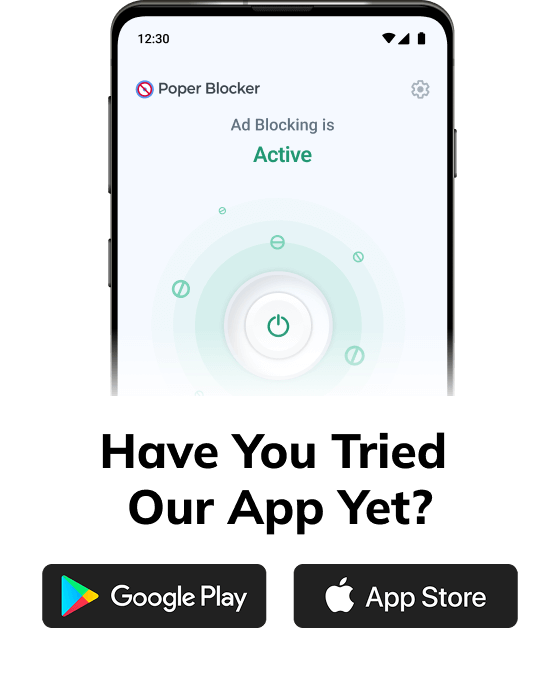Browse the web and you’ll most likely be assaulted from all sides by pop-up scams of every shape and size. Behind the façade of a supposed warning or offer, the apparent benefit is always a ruse intended to trick the user into surrendering personal data, and typically also to download some nasty malware. In other words, the web is full of dangers, and you must know how to spot and deflect them whenever you’re online. How do you protect yourself from such perils?
What are pop-up scams?
Pop-up scams are advertisements or alert windows that appear on the browser while surfing. Scammers make users submit their personal information, download malware, or buy fake software. They design fake pop-ups that look authentic, which seem to come from antivirus software companies or tech support services.
How do pop-up scams work?
Scammers use pop-up phishing and other scam pop-ups via short alerts or fake ads that fool users into thinking they are legitimate. Examples of this strategy include any generic types of pop-up ads with words that make it sound like a genuine alert or computer software warning such as:
- ‘Your computer is at risk’
- ‘Your system is infected, click here now’
When you click, you’re taken to a fake phishing site designed to steal your personal data or trick you into downloading malware.
Other deceptive pop-ups mimic ransomware, falsely claiming your computer is locked and demanding payment to fix it. These scams rely on fear and urgency to make users doubt their instincts.
For instance, phishing pop-ups may display warnings about viruses or suspicious activity, urging you to contact fake tech support. Once you call, scammers pressure you into sharing sensitive information or making unnecessary payments. By understanding how these schemes work, you’ll be better prepared to spot and avoid them, ensuring a safer online experience.
Tips to identify fake pop-ups
You can recognize fake popups if you know what to look for and how to protect yourself. Pop-up scams don’t always look like scams. They are often very convincing. However, there are a few telltale signs you can look for:
Watch for urgency and threats
Scammers normally use hyperbolic language to promote a sense of immediacy. Legit companies rarely (if ever) employ scare tactics to communicate with users.
Check for poor spelling and grammar
Most malicious pop-ups contain grammatical or spelling errors. Genuine warnings from reliable sources often use correct language and formatting.
Compare them with legitimate notifications
Learn how genuine alerts about viruses and malicious downloads from your antivirus software appear. Fake ones often have a different feel and fall short in certain technical details.
Look for unprofessional images
To trigger our alarm bells, fake pop-ups use terrible logos and images. Genuine alerts will have high-resolution graphics and match a company’s branding.
Verify the phone numbers
You can verify the contact before calling any of the pop-up numbers by using a search engine, or by contacting a government department or company. If the contact pops up as legit, they should provide (on their homepage) any official phone number, address, postal address, or email address you might need.
Attempt to close or minimize the browser
If you are not able to close or minimize the browser, it’s most likely a pop-up scam trying to freeze your screen.
How to remove fake pop-ups
These steps will assist you in removing fake pop-ups and in making sure that they don’t return. They will also help to strengthen your digital defenses by doing so.
Use Task Manager to close the browser
You can press Ctrl+Alt+Del and then close the browser in Task Manager. That way, it’s being closed on the operating system itself, which has not been given to the pop-up to control.
Disconnect from the internet
You can also help take steps to stop your computer or laptop from continually transmitting data to scammers if you temporarily disconnect it from the internet.
Reboot into safe mode
The trick is to restart the computer in Safe Mode, which loads only essential operating system files and prevents the malicious new files from running.
Delete temporary files
From your Start menu, access the Disk Cleanup tool and delete temporary files. You’ll minimize the risk of infectious malware in temporary storage.
Run a virus scan
If you choose to use anti-virus software, download and install a good one. Perform a full scan and delete or quarantine (if possible) any files detected as being malicious.
Change compromised passwords
If you think one or more accounts could be at risk, you should change every related password as soon as possible.
Install and use Poper Blocker
Install an ad-blocking extension such as Poper Blocker and stop pop-up scams before they appear. This browser extension will remove the annoying intrusive pop-ups, overlays, and fake ads for you, giving you complete peace of mind as you browse online.
Stay protected from pop-up scams
So, for the love of your personal info, be proactive in your effort to outsmart pop-up scams. Learn how to spot fake pop-ups and use Poper Blocker to make the web a safer place for you. If anything about your experience raises red flags, know what to do, and do it, fast. The entire point of pop-ups is to hijack your computer. Don’t let them – stay safe by beefing up your online privacy tonight.
FAQs
What are the risks of falling for pop-up scams?
People who fall for pop-up scams risk having their personal information stolen, their identities stolen, or their bank accounts emptied. Pop-up scams are designed to deceive, and they are ultimately meant to separate users from their money.
Can pop-up scams install malware on my computer?
Yes, following the instructions in such pop-ups would immediately install malware in your computer, which could cause data or information leakage, spy on your operations, and even completely shut down your computer.
How can I report a pop-up scam?
If you’ve been hit by a pop-up scam, you can report it to consumer protection bureaus, your internet service provider, or the local authorities. In this way, you might deter others from falling for the same scam.
Is it safe to call the phone numbers on pop-up warnings?
No, you must run the phone number through an official database to check if it is genuine before making a call. Fraudsters will most likely give you a fake number and ask for your account information or require a payment from you.
What measures can I take to prevent pop-up scams?
Get antivirus software from a source you can trust, keep your software up to date, use pop-up blockers, and avoid clicking on suspicious pop-ups. Being aware of the most prevalent rip-off methods can also get you off their radar.


